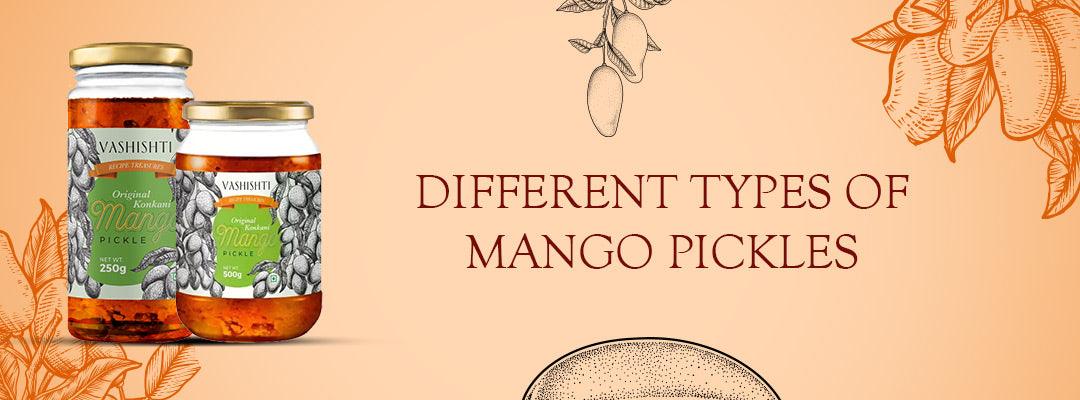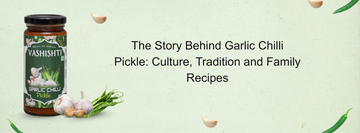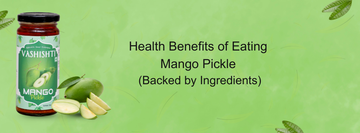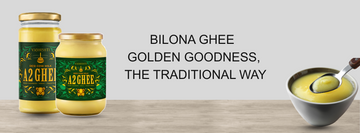Indian pickles are quite different from pickles all around the world.
Generally speaking, a pickle is any fruit or vegetable that has been steeped in vinegar, brine, or a saline solution. Its connotation in India is totally different. Pickles manufactured in this country have a lot more ingredients than just vinegar and vegetables. Adding a lot of spices and herbs helps make Indian pickles.
The mango pickle is one of the most typical and well-liked pickles in India.
Mango pickles can be produced in a number of different ways. The mango pickle is prepared differently by people from various regions of India. They offer a good spice punch in every bite and are rich in flavour and texture. Because mangoes are a seasonal fruit, the pickles are prepared just during that season, which makes them even more unique. The only mass-produced mango pickles accessible all year round for consumption.
Let's check the list of ingredients.
The ingredients in Indian pickles, such as chilli powder, coriander powder, ginger, garlic, turmeric, mustard, cumin, and fenugreek, are to die for.
Indian pickles contain a wide variety of different-flavoured spices because Indians love spicy food so much.
And you know: Mango pickle is a widespread and well-liked pickle in India. Mango pickles can be produced in a variety of methods. Distinct regions of India have different methods for making mango pickles. Every bite packs a wonderful spice punch and is rich in flavour and texture. Because mangoes are a seasonal fruit, the pickle is even more unique because it is only produced during that season. All year long, only the mass-produced mango pickles are accessible for consumption.
There Are Various Mango Pickles.
There are various methods for making these pickles because, as was previously mentioned, each region of India has its own unique mango pickle. These mango pickles have a mouth-watering flavour no matter where they are made or what spices are used to make them. Here is a quick look at some of the common varieties of mango pickles and how they are created.
1. An easy and simple mango pickle
The most popular variety of mango pickle is a straightforward and basic one. This is created by chopping up raw mango into little cubes and letting them soak in a saltwater solution for a while. Pour some oil into a heated skillet, add some mustard, and cook the mango while it soaks. A few curry leaves should be mixed with the oil. Add the soaked mango slices and continue to sauté for a while after the mustard seeds begin to sputter.
2. Punjabi Mango Pickle
In all of India, the Punjabi dish Aam Ka Achar is particularly well-liked. Fenugreek, fennel, onion, and mustard seeds as well as asafoetida, mustard oil, and red chili powder are among the ingredients in this pickle. The mangoes need to be carefully cleaned before being cut into squares. On a low burner, pour the oil into the pan. Give it time to thoroughly cool.
3. Tender Mango Pickle
Tender mango pickles, commonly referred to as kadumanga Achar, and are produced from tender mangoes. There are just a few components needed to make this pickle, and it is quite simple to prepare. Thoroughly clean the delicate mangoes and immerse them for 10 to 15 days in salt water. The mangoes should be removed from the salt water after 15 days. Mangoes are reinserted into the salt water mixture once the mustard, Chile, and asafoetida powders have been added. Before you remove the mangoes to consume them, let them soak in the salt water for a few days. You'll note that the mangoes have a lot of flavour and are quite juicy and salty.
4. Rajasthani Pickle
Like the mango pickle created in Andhra Pradesh, this variation of the Rajasthani mango pickle is hot, but it is substantially distinct. Mangoes must first be peeled and sliced into little pieces before being placed in a jar of salt water. Observe two days of rest. Star anise, fenugreek, mustard, and chilli powder are the dry components required to prepare this pickle. The mango slices should be removed and thoroughly dried after two days. When the mangoes are fully dried, combine them with half of the oil needed for the recipe. Add the remaining components now, then transfer the mixture to a jar before adding the remaining oil.
5. Andhra Pickle
This pickle is mostly produced in Andhra Pradesh, where it is mildly spicy. Unripe mango, mustard seeds, red chilli powder, fenugreek seeds, salt, chickpea powder, turmeric powder, and sesame oil are required for this pickle. Before cutting the mangoes into bite-sized pieces, soak them for an hour. Before powdering and combining the dry ingredients with the mango, the dry components must all be sun-dried. Before adding the sesame oil, thoroughly combine all the dry ingredients in the pan. Mix the pickle thoroughly after adding the oil to the entire mixture to ensure that all of the spices are thoroughly absorbed. For the pickle to maintain its freshness, keep it in a spotless container.
6. Original Konkani Mango Pickle
Mango pickles bring back childhood memories of orchards, summer vacations, and meals that wouldn't be complete without their sour flavour. Pickles are a carnival of flavour, but they're also an immune system booster and a digestive system enhancer because to their antioxidant characteristics. Few of the vital nutrients that are sprinkled throughout its profile as a result of the raw components utilised in preparation are vitamin C, vitamin A, potassium, iron, calcium, and curcumin (from turmeric). We offer you the authentic, original Konkani mango pickle made according to old-fashioned methods. Our fresh, local orchard-sourced raw mangoes are treated with the finest spices, giving them a flavour that will undoubtedly bring back pleasant memories.
Conclusion
As you can see, the ingredients for each of these mango pickles vary depending on how they are produced. However, they have really strange tastes.
Even when it comes to its pickles, India is undoubtedly a country of "unity in diversity"!



